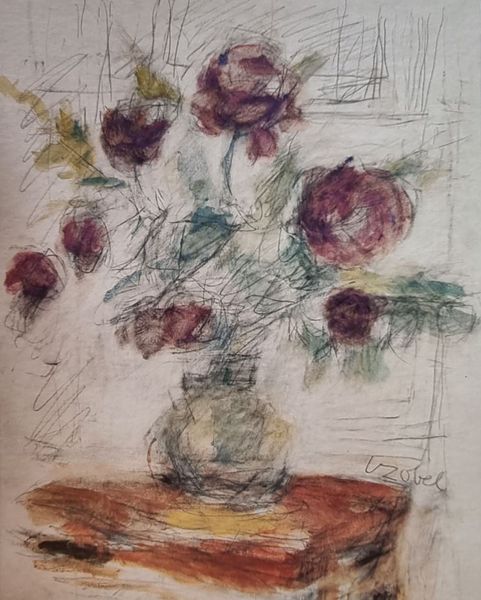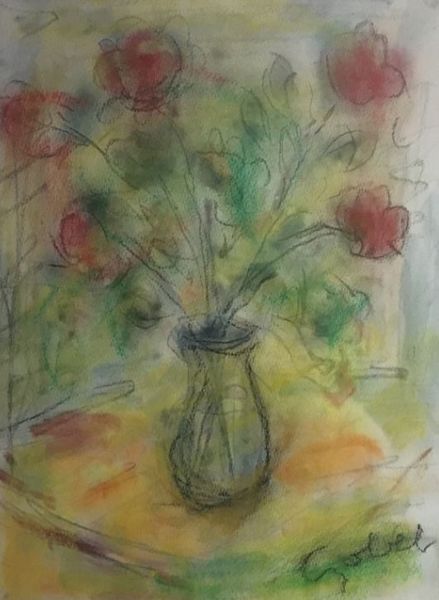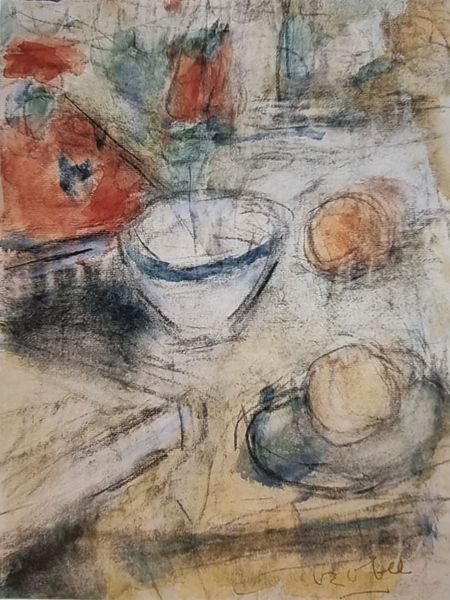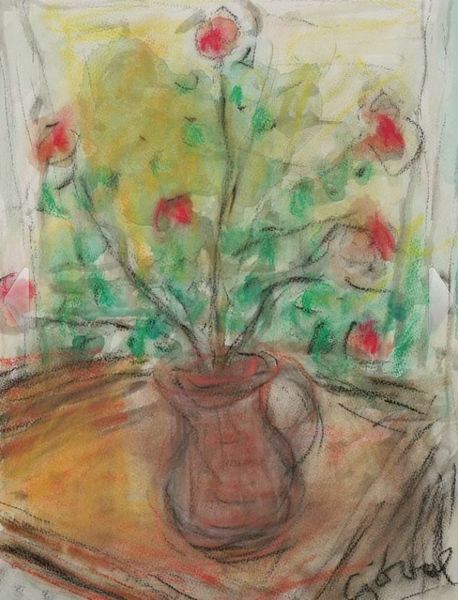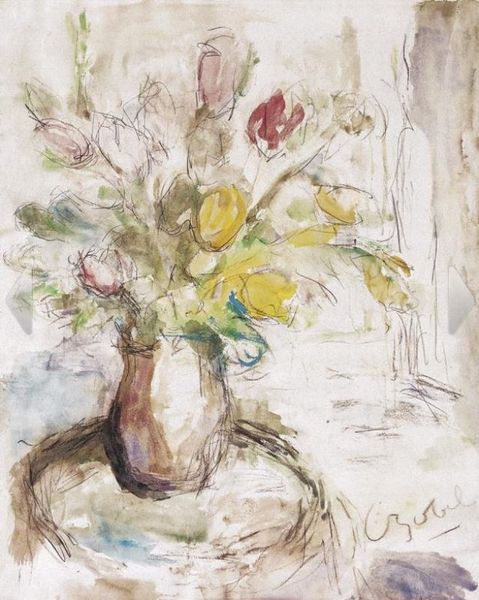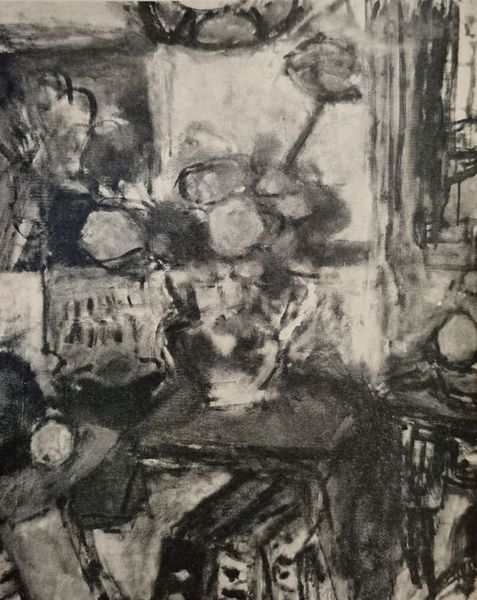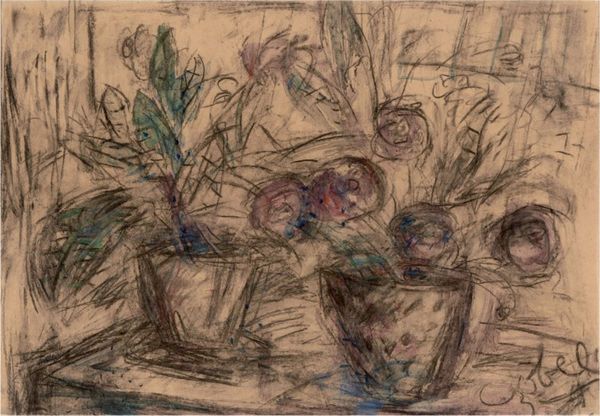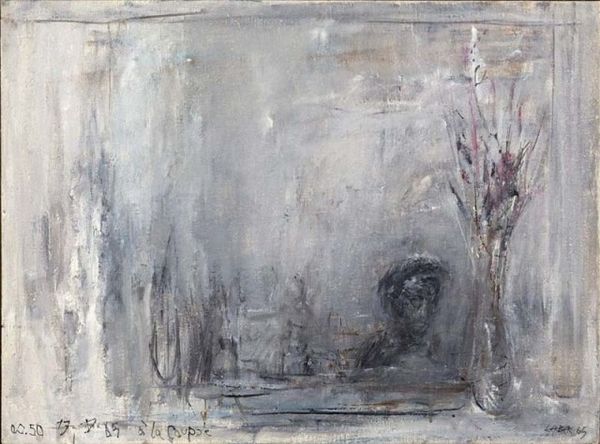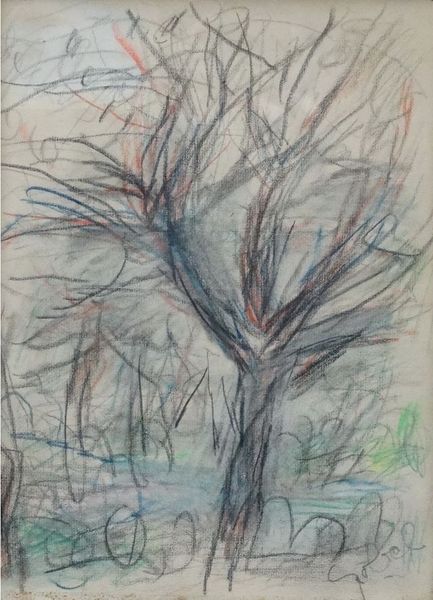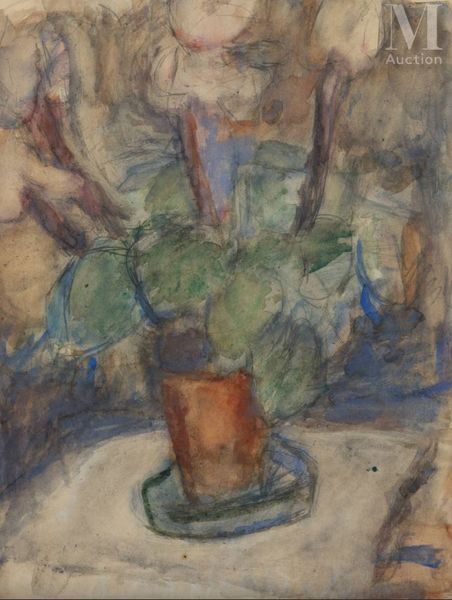
drawing, charcoal
#
drawing
#
charcoal drawing
#
possibly oil pastel
#
expressionism
#
charcoal
#
watercolor
Copyright: Bela Czobel,Fair Use
Curator: Here we have "Asztali Csendélet," which translates to "Still Life with Table," attributed to the Hungarian artist Béla Czóbel. It’s thought to be made with charcoal, possibly with additions of watercolor. Editor: The immediacy of the charcoal marks really grabs me. There's a certain fragility and transience in the blurry depiction that sets it apart from typical still lifes. Curator: Yes, it really showcases Czóbel’s expressionist leanings. One can imagine the artist rapidly sketching, capturing not just the appearance, but the very essence of the subject. Do you notice the visible texture of the paper itself? Editor: I do. The choice of the rough, almost raw surface is critical. It adds another layer to this expressionist sensibility. This almost deconstructed rendering avoids perfection. It invites contemplation rather than passive observation. We must also recognize the context that would motivate such output and the way it would be interpreted by the culture of its origin. Curator: Indeed. One must also ask, what other available materials might Czóbel have selected and why he would choose to invest his labor with charcoal over other forms? Furthermore, the ambiguity around dating encourages us to ponder its place within Czóbel’s wider output. What was the art market and its conditions that this was presented in? Editor: Given that the exact date of creation remains unknown, analyzing this from a social historical lens poses certain challenges. Was this made during Czóbel’s time in the Fauvist circles of Paris or later, reflecting on past encounters? It might show the transition through different cultural contexts and the availability of his market, depending on when he produced it. The political currents of the time certainly also influenced artistic expressions like Czóbel’s. Curator: Precisely. I see how you’re piecing together its potential meanings. What’s compelling is that it transcends simple representation. It challenges viewers to see beauty in ephemerality, in the mundane objects made remarkable through artistic labour. Editor: Definitely, seeing the broader spectrum, from materiality to Czobel's reception adds greater depth. It gives the drawing meaning in today's art market as well as its origin. Curator: Very insightful; understanding his chosen techniques offers some great historical viewpoints, don't you think?
Comments
No comments
Be the first to comment and join the conversation on the ultimate creative platform.

